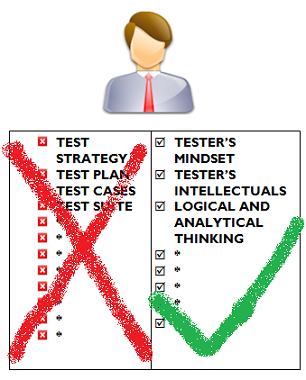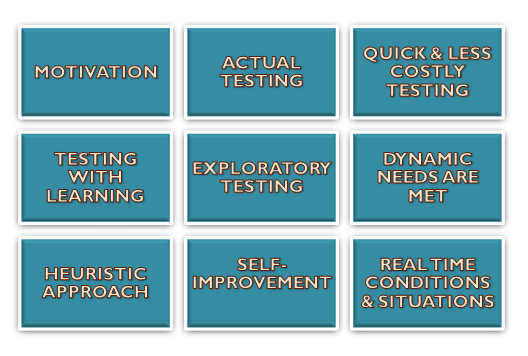


Rapid Software Testing is a unique approach of doing testing by making testers independent of endless documentations & paper-works, and directs them to accentuate on their intellectual traits to carry out the process of testing. It's a quick, inexpensive and expedient way of testing any software at any time and under any condition or circumstances.

This testing unlike traditional testing, approaches mind-set and thinking ability of the tester as a resource for testing. To distinguish rapid from traditional, a little knowledge of traditional testing needs to be perceived.
Traditional Testing is an orthodox way of testing. It relies on paper-works and proper documentation during each phase of testing process. It's a good strategy to follow proper documentation when your brand or value is at stake, but it is, not always possible to carry out traditional testing keeping in account, time and budget constraints linked with the projects.


Testers must be aware of underlying principles of testing upon which best possible testing process could be structured. Here, we are providing some of the principles which may be considered in order to achieve maximum success in the rapid testing of the application.
Every software project is bound to time-limits. The volatile nature and growing complexities of these projects makes it more difficult. Despite these, developers and testers are inclined towards more working on the project than what is required due to their inquisitive nature. However, they should also be aware of the fact that the project needs to be completed within stipulated deadlines.
Test cases are artifacts as they are prepared by the testers. These are converted into act after their implementation and execution. Therefore, a tester should not be confuse between test cases and actual testing as former portrays procedures for performing testing, while the latter is the execution of these procedures.
Even being full-focussed, dedicated & attentive, we are left out with some errors keeping in view the human nature of committing mistakes. To commit mistakes is not a big issue but repeating same mistakes may not seem to be acceptable. Therefore, it is necessary to learn from the mistake done in the past so as to improve in present and future.
Controlling the quality is in the hands of developers, but testers should not neglect the fact that they are also equally responsible for quality, keeping in account their task of tracing bugs so as to achieve and maintain the quality of the product.
Each and every user has a different taste. It depends upon them; what they prefer as quality in a software product. It might be possible that only one quality of the software is important for one user whereas other user prefers another quality. Thus, the fact cannot be ignored that human taste or perception influences the software development process.
Advertisement: